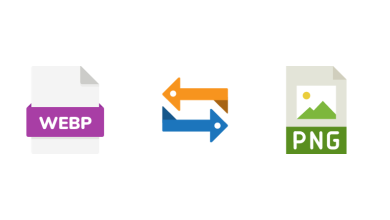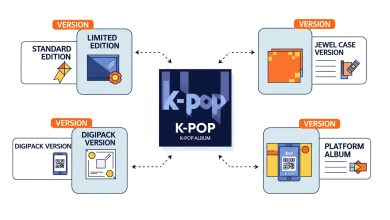In the fast-paced world of digital marketing, businesses strive to stay ahead of the competition. One of the most effective channels in their arsenal is email marketing, supported by well-designed email templates. With its ability to reach customers directly, email marketing holds a unique position in the digital landscape. However, the key to truly harnessing the power of email marketing lies in the strategic use of data. Data-driven decisions, supported by analytics, can transform an average email campaign into a high-performing marketing powerhouse. In this article, we will explore how businesses can leverage analytics in email marketing to create more effective campaigns, improve customer engagement, and ultimately boost conversion rates.
The Importance of Data-Driven Decisions
Data-driven decisions are not a new concept in marketing. However, their significance has only grown in recent years due to the sheer volume of data available to marketers. In email marketing, this means understanding subscriber behaviors, engagement patterns, and campaign performance metrics. Marketers can make informed choices that drive better results rather than relying on guesswork or traditional methods.
By using data, businesses can ensure that their email campaigns are not only relevant but also personalized, timely, and valuable to recipients. Analytics provide insights into how recipients interact with emails, what content resonates with them, and how they move through the sales funnel. This enables marketers to fine-tune their strategies and maximize the return on investment (ROI) of their email marketing efforts.
Key Analytics for Email Marketing Success
- Open Rates
Open rates are one of the most common metrics used to measure the effectiveness of an email campaign. This metric tells marketers how many people opened their email out of the total number of recipients. While open rates can provide a general sense of how successful an email subject line or timing is, they must be analyzed alongside other metrics for deeper insights. - Click-Through Rates (CTR)
The click-through rate measures the percentage of recipients who clicked on links within an email. This metric reveals how compelling the email content is and whether it encourages action. A high CTR indicates that the email’s message, offer, or design resonates with subscribers, while a low CTR suggests that changes may be needed in these areas. - Conversion Rates
Conversion rates are critical in measuring the ultimate success of an email marketing campaign. This metric tracks how many recipients took a desired action after clicking on a link in the email, such as making a purchase, signing up for a webinar, or downloading a whitepaper. A high conversion rate indicates that the email effectively led subscribers down the sales funnel. - Bounce Rates
Bounce rates refer to the percentage of emails that couldn’t be delivered to recipients’ inboxes. This can occur for a variety of reasons, such as invalid email addresses or full inboxes. Monitoring bounce rates helps marketers ensure their email lists are clean and that their emails are reaching the intended recipients. - Unsubscribe Rates
Unsubscribe rates provide insight into how recipients feel about your email content. A high unsubscribe rate might indicate that your emails are not relevant or valuable to your audience. It’s essential to monitor and address this metric, as it can help refine email content and targeting strategies. - Engagement Over Time
Understanding how engagement fluctuates over time is crucial for identifying patterns and optimizing future campaigns. Analyzing which days of the week and times of day lead to higher open and click rates can help marketers time their campaigns more effectively. - Segmentation Analytics
Segmentation analytics break down email performance by specific groups within the audience. This includes data on different demographics, behaviors, and purchase histories. By analyzing segmentation data, marketers can better tailor their campaigns to different audience segments, leading to more personalized and relevant messages.
Comprehensive Analytics in Email Marketing
To truly leverage the power of analytics in email marketing, businesses must utilize comprehensive analytics. A comprehensive approach to analytics means collecting and interpreting a wide range of data points from multiple sources, offering a holistic view of campaign performance.
Using advanced tools, businesses can track not only the typical metrics such as open and click-through rates but also engagement across multiple devices and platforms. These tools can also identify trends in consumer behavior and enable A/B testing, allowing marketers to experiment with different approaches and refine their email strategies over time.
Moreover, comprehensive analytics enable businesses to monitor the success of their email campaigns in real-time. This dynamic feedback loop allows for quick adjustments and fine-tuning of campaigns as they progress. With the insights gained from these tools, marketers can optimize subject lines, content design, and call-to-action placements to boost effectiveness.
A powerful tool in this domain is Elementor, a website builder that integrates well with email marketing efforts. With Elementor, businesses can create email-friendly designs and templates that are optimized for responsiveness across devices. This tool also allows for the easy integration of analytics to track performance, ensuring that the email design and content are as effective as possible.
Strategic Email Marketing: Making Informed Decisions
Data-driven decisions in email marketing are most effective when they are part of a broader strategic email marketing plan. Rather than simply sending out a series of emails, strategic email marketing focuses on aligning email campaigns with overarching business goals.
- Audience Segmentation
One of the key pillars of strategic email marketing is audience segmentation. By breaking down your email list into distinct segments based on demographics, behavior, or preferences, you can deliver tailored content that resonates with each group. This increases the chances of engagement and conversion, as emails are more relevant to recipients. - Personalization
Personalization is another critical aspect of strategic email marketing. By using customer data, you can personalize email content to make it more relevant and valuable. This could mean addressing recipients by their first name, recommending products based on past purchases, or sending targeted offers based on their browsing behavior. - Automation
Email marketing automation is an excellent tool for increasing efficiency while maintaining a high level of personalization. Automated email sequences can be set up to engage customers at various stages of the sales funnel. For instance, welcome emails, abandoned cart reminders, or re-engagement emails can be triggered based on customer actions. Analytics can be used to track how these automated emails perform and make necessary adjustments to improve their effectiveness. - A/B Testing
A/B testing, or split testing, is an essential tactic for optimizing email campaigns. By testing different subject lines, content formats, images, and calls to action, marketers can determine which elements resonate best with their audience. The insights gained from A/B testing, combined with comprehensive analytics, allow for continuous refinement and improvement of email marketing strategies. - Timing and Frequency
An often-overlooked aspect of strategic email marketing is timing and frequency. It’s essential to determine the optimal time of day and frequency of emails for your audience. Too many emails can overwhelm recipients and lead to unsubscribes, while too few emails may result in missed opportunities. Analytics can help identify the best timing and frequency for sending emails based on engagement patterns. - Multichannel Integration
Modern email marketing is not isolated from other channels. To create a seamless experience for customers, email campaigns should be integrated with other marketing channels such as social media, paid advertising, and websites. By analyzing cross-channel data, marketers can create a cohesive strategy that engages customers at multiple touchpoints, increasing the likelihood of conversion.
Conclusion: The Power of Analytics in Email Marketing
The role of analytics in email marketing cannot be overstated. By using comprehensive analytics, businesses can gain valuable insights into how their campaigns are performing and make data-driven decisions that enhance their effectiveness. From improving engagement rates to optimizing content and timing, analytics enable marketers to refine their strategies and achieve better results.
At the heart of successful email marketing is the ability to make informed, data-driven decisions that align with broader business goals. By incorporating strategic email marketing practices such as audience segmentation, personalization, automation, and A/B testing, marketers can maximize their ROI and drive more meaningful engagement with their subscribers.
Ultimately, leveraging analytics in email marketing isn’t just about understanding past performance; it’s about using that information to inform future strategies, ensuring that every email sent is an opportunity to connect with customers in a meaningful way.
This article emphasizes how businesses can harness the power of data and analytics to refine their email marketing efforts and highlights the role of tools like Elementor in optimizing email campaign performance. By making data-driven decisions, marketers can turn email marketing into a powerful tool for engagement and conversion.






